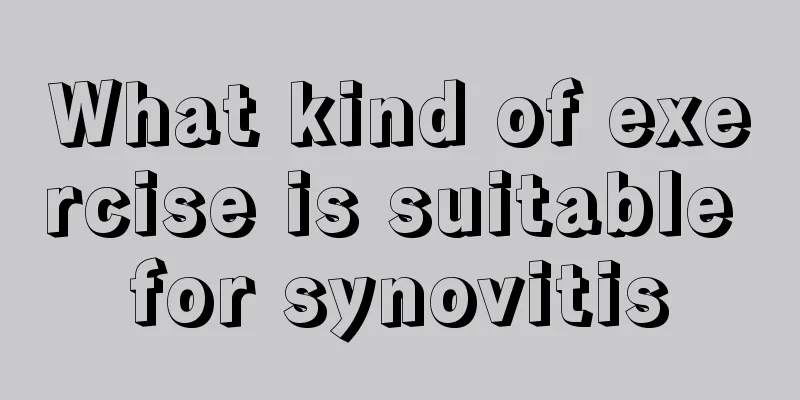How long does it take for the anti-inflammatory drip to take effect

|
Anti-inflammatory drugs are a commonly used type of medicine in life, and anti-inflammatory drips are injected into the human body through human veins. Infusion of anti-inflammatory water can effectively play an anti-inflammatory role, prevent infection of body wounds, and can also be used to treat some diseases. The time it takes for anti-inflammatory water to take effect is different, depending on the physique of different people and the content of the drug injected. How long does it take for the anti-inflammatory water to take effect? The duration of drug efficacy varies according to the half-life of the drug. For example, the efficacy of penicillin can last for about 4-6 hours, and the efficacy of ceftriaxone sodium can last for about 12 hours. It varies from person to person and is a time-dependent antibiotic. Aminoglycoside antibiotics such as streptomycin and gentamicin are concentration-dependent antibiotics, and the strength of the antibacterial effect is related to the blood drug concentration. What are anti-inflammatory drugs? Anti-inflammatory drugs are the common name for anti-infective drugs, which can be divided into antibacterial drugs, antifungal drugs, antiviral drugs, antituberculosis drugs and antiparasitic drugs. So what are these anti-inflammatory drugs? Let me introduce some antibacterial drugs in detail. According to their chemical types, they can be divided into seven categories: penicillins, aminoglycosides, cephalosporins, macrolides, tetracyclines, quinolones, and sulfonamides. The main varieties of these anti-inflammatory drugs are introduced as follows: Oral medications include: amoxicillin, azithromycin, roxithromycin, norfloxacin, oxytetracycline, tetracycline, etc. For external use, there are: erythromycin ointment (eye ointment), chloramphenicol eye ointment, Bactroban, etc. 1. Penicillins Commonly used ones include penicillin G, penicillin V, methicillin (New Penicillin I), ampicillin (ampicillin), amoxicillin (hydroxyampicillin), ticarcillin (carboxytic thiophene penicillin), piperacillin (oxypiperacillin), etc. Suitable for respiratory tract, skin and soft tissue, urinary and reproductive tract infections, etc. The main advantages of penicillins are their strong bactericidal effect, few toxic side effects, they are relatively safe for use by pregnant women and children, and they do not affect liver function. But it should be noted that its main adverse reaction is allergic reaction, including allergic dermatitis. Serum sickness, rash, contact dermatitis, etc. Use with caution in patients with severe renal impairment. 2. Aminoglycosides Aminoglycosides are broad-spectrum antibiotics with good bactericidal effects on Gram-negative bacteria and are suitable for lower respiratory tract, urinary tract, intestinal infections, etc. Different varieties have different characteristics. Gentamicin, tobramycin, netilmicin, and amikacin (amikacin) are commonly used varieties, among which netilmicin has stronger antibacterial activity and lower oto-kidney toxicity. Streptomycin is now mainly used to treat tuberculosis. Spectinomycin can be used to treat gonorrhea. Neomycin is used only orally and topically because of its high ototoxicity. The main adverse reactions of aminoglycosides are allergic reactions, ototoxicity (which can cause deafness), nephrotoxicity and neurotoxicity. It is contraindicated for people who are allergic to this type of drug, and should be used with caution by people with renal insufficiency, the elderly, and pregnant women. 3. Cephalosporins Can be divided into four generations. The first-generation cephalosporins include cefazolin (Xianfeng No. 5), cefradine (Xianfeng No. 6), etc., and the oral ones include cephalexin (Xianfeng No. 4), cefradine (Xianfeng No. 6), cefadroxil, etc. Suitable for respiratory tract, skin and soft tissue, urinary and reproductive tract infections, etc. The second-generation cephalosporins have a broader antibacterial spectrum, stronger antibacterial effect and lower renal toxicity than the first-generation ones. The drugs used include cefuroxime (cefuroxime), cefmandole, cefoxitin, cefmetazole, etc., and the oral drugs include cefuroxime axetil, cefaclor, etc. The third-generation cephalosporins have the characteristics of broad antibacterial spectrum, strong antibacterial activity, wide distribution in the body and low toxicity to the human body. The drugs used include cefotaxime, ceftazidime, ceftriaxone, cefoperazone, ceftizoxime, cefodizime, etc., and the oral ones include cefixime. Cefpodoxime axetil, cefdrin pivoxil, ceftriaxone, etc. It can be used for respiratory tract, skin and soft tissue, urogenital system, gastrointestinal tract infections and sepsis, etc. The fourth-generation cephalosporin is superior to the previous three generations due to its special mode of action and broad antibacterial spectrum. Because the possibility of cross-allergy with penicillin is very small, it can be used for patients who are allergic to penicillin. Currently available on the market are useful cefepime and ceftriaxone. Cephalosporin antibiotics have the advantages of a broad antibacterial spectrum, strong antibacterial effect, low toxicity, and fewer allergic reactions than penicillin, but they are relatively expensive. Penicillin cross-allergy may occur, so use with caution in patients with a history of penicillin allergy. The use of third-generation and fourth-generation cephalosporins can kill normal beneficial bacteria in the body, causing dysbacteriosis and secondary infection, which should be taken seriously. In addition, there are various combination preparations of β-lactamase inhibitors sulbactam, clavulanic acid with penicillins and cephalosporins, such as amoxicillin/clavulanic acid, ticarcillin/clavulanic acid, ampicillin/sulbactam, amoxicillin/sulbactam, etc. When used in combination, they can enhance the antibacterial effect and expand the antibacterial spectrum. |
<<: Taking cephalosporin for tattoos has anti-inflammatory effect
>>: Which crystals have anti-inflammatory effects
Recommend
How to store opened red wine
Red wine can help us appreciate different flavors...
What do forehead wrinkles indicate?
Whether for men or women, having wrinkles on the ...
Passion fruit with yogurt
People's opinions on passion fruit are often ...
What is the Western medical name for spleen and stomach deficiency and coldness
Spleen and stomach deficiency and cold is a term ...
8 signs of disease written on your face
Doctors making eye contact with patients isn’t ju...
What are the symptoms of bladder cancer?
The incidence of bladder cancer is very high in o...
How to release air from a pressure cooker
The pressure cooker needs to be vented after use....
Why does my lower abdomen ache
Why do I have a dull pain in my lower abdomen? Th...
What should I do if the skin on my neck looks like goose bumps
The skin on the neck is like goose bumps. In fact...
The truth about facial lead removal
Lead is a common metal element in nature. If the ...
Causes and solutions to nightmares
If you have a nightmare while sleeping, it is ver...
How to care after kidney cancer surgery
Surgery is the most common method for treating ki...
What is the mnemonic for the functions of the five internal organs and six bowels
Nowadays, everyone attaches great importance to h...
What are the causes of high bilirubin
If the bilirubin level in the human body is too h...
What is the reason for lemon yellow urine
People urinate every day, and generally speaking,...









